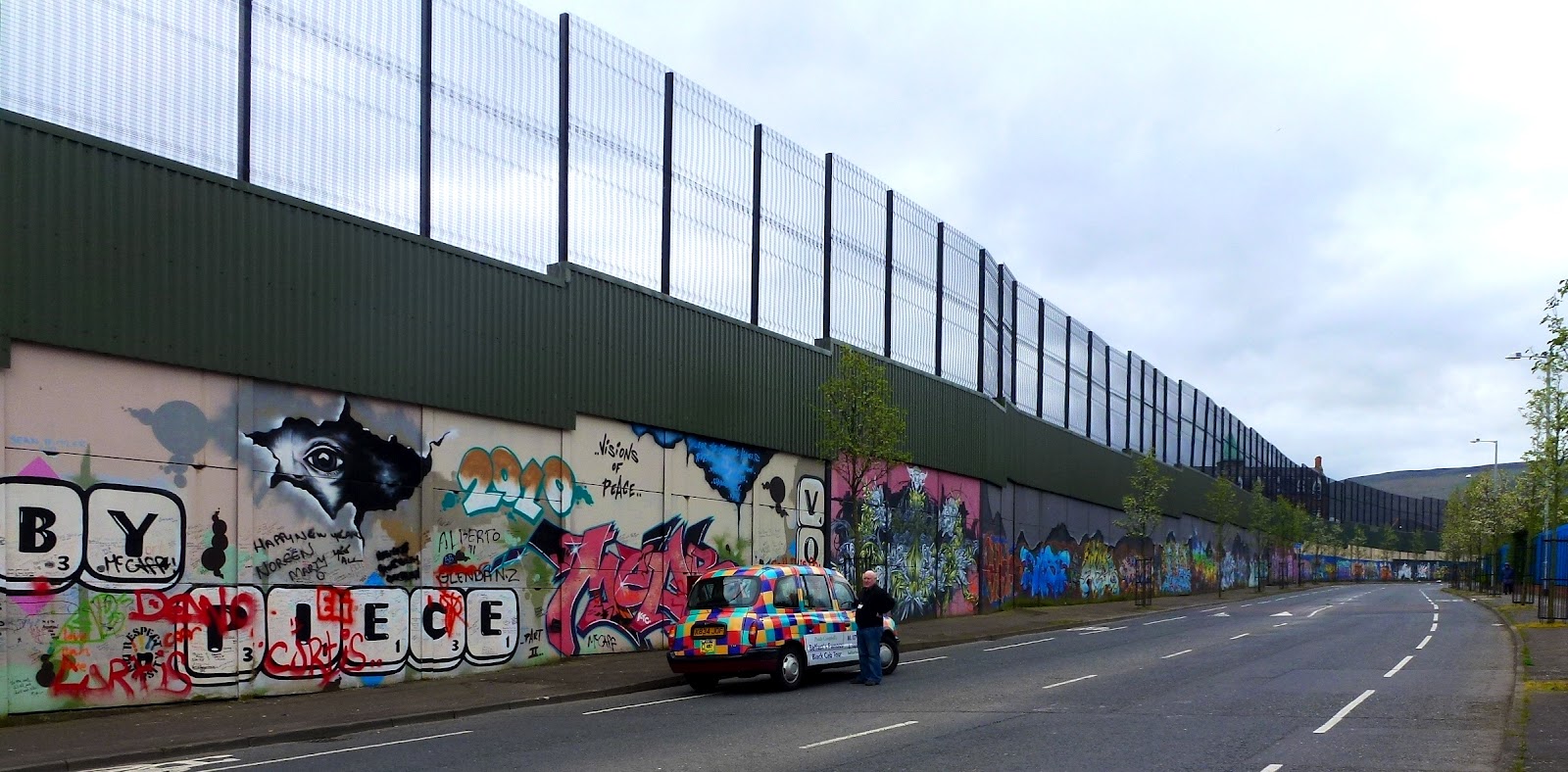City Without Walls
I went to two Imagine events today. The first looked at the issue of “Peace Walls,” the first of which was erected in 1969. They snake their way through the city, dividing Protestant and Catholic enclaves. During the troubles, they prevented violence and rioting in so-called interface areas. The Good Friday Agreement is now 18 years old and the government has committed to bringing down the walls by 2023. However there is no process for doing so and enmity remains high on both sides of the wall--where insecure neighbours want the walls to remain.


From The Guardian: “More than 40 years after the British Army constructed the first of those barriers, Belfast is still scarred by them: corrugated iron fences, some as high as 18ft, topped with barbed wire. Defensive architecture, it turns out, is far easier to erect than tear down.” Our discussion (more Post It notes) covered what purposes the walls serve and what is needed to bring them down. One of the things I learned is that Protestants with any money or education left the interface areas for new suburbs (built just for them). The people who remain on the Protestant side are impoverished, have mental health issues, and feel a great sense of loss. Partly out of insecurity, they cling to their “culture” (bonfires, mayhem on 12th of July, painting the British flag on everything, hating the people on the other side of the wall). The people on the Catholic side (who faced severe discrimination until the 1980s) are better educated and more upwardly mobile. They didn’t move out en masse, so the communities are not as hard up, but are (rightfully) fearful of the people across the wall.
My evening event was to see a screening of:
‘UP STANDING: STORIES OF COURAGE FROM NORTHERN IRELAND’
Clip available here:
https://imaginebelfast.com/events/the-past-is-a-moving-picture/
The film was produced and directed by one of my heroes, Paul Hutchinson, who is a storyteller at 10X9. It tells the stories of 10 people in Northern Ireland who stood up to sectarian violence. His mother was one of them. In the 1970s, a Catholic girl came to her door hysterical that paramilitaries were going to kill her father. Three Catholic families on Paul’s street in East Belfast had already been driven out. His mother took the girl in and called the police. The result was smashed windows at his house and petrol bombs in his front yard. The family had to move a few days later to Bangor. Starting over at age 10 (in one of those purpose-built Protestant estates) left an indelible mark on him. All because his mother helped a desperate child.
3/15